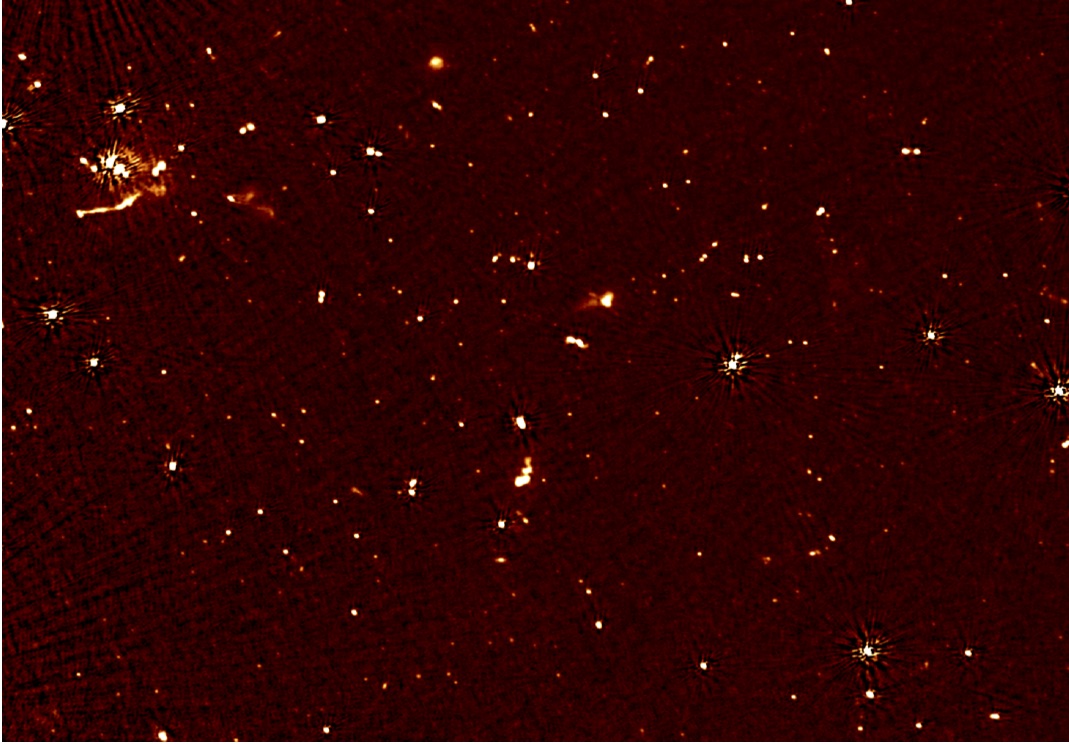Daily Image
21-10-2016Not every piece of sky is the same: the LOFAR Lockman Hole project
| Submitter: | Elizabeth Mahony & Raffaella Morganti |
| Description: | Some of the high-priority pointings of LOFAR have been on famous fields. These have the advantage to be well observed with many different telescopes covering many wavelength regions such as X-ray, optical, IR and a variety of radio frequencies. These ancillary data are essential for characterising the physical and evolutionary properties of the various source populations detected in deep radio fields (mainly star-forming galaxies and active galactic nuclei). One of these fields is the so called "Lockman Hole", first identified by Lockman et al. (1986) who noted the region has a very low column density of foreground Galactic HI, making it ideal for deep observations of extragalactic sources, particularly in the IR due to the low IR background. Since then, optical and infrared data have been taken using ground-based telescopes as well as the Spitzer and Herschel satellites. Also deep X-ray observations with XMM-Newton and Chandra are available for this piece of sky while most radio telescopes have also observed this region. The latest addition to this impressive collection is the image made with LOFAR. The LOFAR observations extend the multi-frequency radio information available for the Lockman Hole down to 60 MHz, allowing us to explore a new spectral window for the faint radio source population. The image shows a zoomed-in region approximately 2-degrees across at 150 MHz, a fraction of the full image which covers 34.7 square degrees. The image has a resolution of 18.6x14.7 arcsec and reaches an rms of 160 uJy/beam at the centre of the field. Work is in progress to further improve the quality and the resolution using facet calibration. As expected for a low-frequency selected sample, the vast majority of sources exhibit steep spectra, with a median spectral index of -0.78 between 150 MHz and 1.4 GHz. For a bright subset we can trace the spectral properties down to lower frequencies using 60-MHz LOFAR data, finding tentative evidence for sources to have flatter spectra between 60 and 150 MHz. We also identify a sample of 100 Ultra-steep spectrum (USS) sources and 13 peaked-spectrum sources. We estimate that up to 21 percent of these are candidate high-z radio galaxies, but further observations are required to confirm the physical nature of these objects. These results are presented in a paper accepted for publication in MNRAS including a number of ASTRON (and former-ASTRON) astronomers: Elizabeth Mahony, Raffaella Morganti, Ilse van Bemmel, Marisa Brienza, Jeremy Harwood and George Heald. http://adsabs.harvard.edu/abs/2016MNRAS.463.2997M |
| Copyright: | ASTRON |
| Tweet |  |
